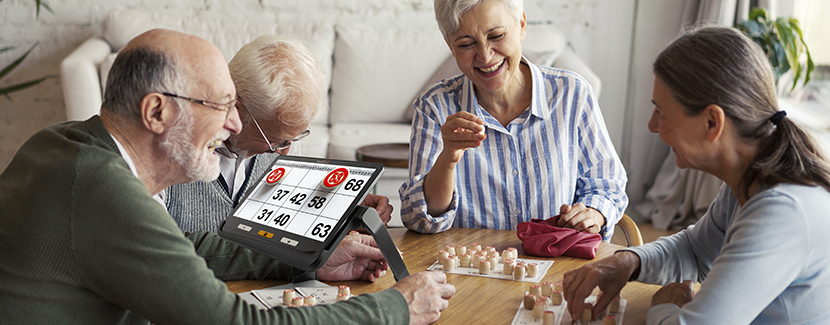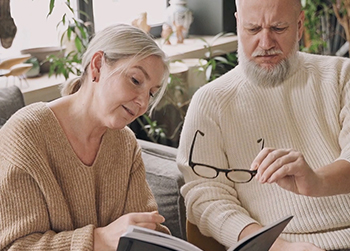
Low vision exams improve quality of life for just about anyone with vision loss or living with visual impairment. Students and youth with visual impairment often benefit from classroom accommodations to gain access to the very visual world of classroom learning. While these adjustments can be as simple as moving closer to the board, more often than not, students with low vision need tools such as reading glasses or bifocal lenses to magnify print material in the classroom.
Additionally, people of all ages who have low vision benefit from working directly with a low-vision optometrist who can assess them for specialized tools and equipment to improve their visual access for specific tasks. This might look like a hand-held magnifier for reading tasks or an electronic magnifier for distance viewing and close-up reading and writing. Modern assistive technology often merges mainstream technologies like Google Classroom with specialized tools like a tablet-based magnifier to allow students to access the same school apps and resources as their classroom peers.
Scheduling regular eye exams for yourself or your child is an important part of developing a healthy, active lifestyle. For people living with low vision; reading, writing, recognizing faces, watching TV, or even driving a car can be possible with specialized tools and devices.
Depending on the exam, an eye care professional may recommend prescription low-vision glasses or several low-vision aids or devices to help you maintain your hobbies and daily activities. But what exactly is the difference between a regular eye exam and a low vision exam?
When we hear the term “eye exam” most of us think of the routine eye exams we receive at from our eye doctor or perhaps a series of exams with an ophthalmologic specialist. These routine exams are important, even if we do not wear glasses or contact lenses. An eye exam can reveal a lot about our general health. The general recommendation is that children should receive a comprehensive eye exam every year and adults should receive a comprehensive eye exam every two years. Your child’s ophthalmologist or optometrist may recommend more frequent visits depending on your child’s eye condition and medical history. During these visits the doctor will check your or your child’s eye health and check on the status of a current glasses’ prescription.
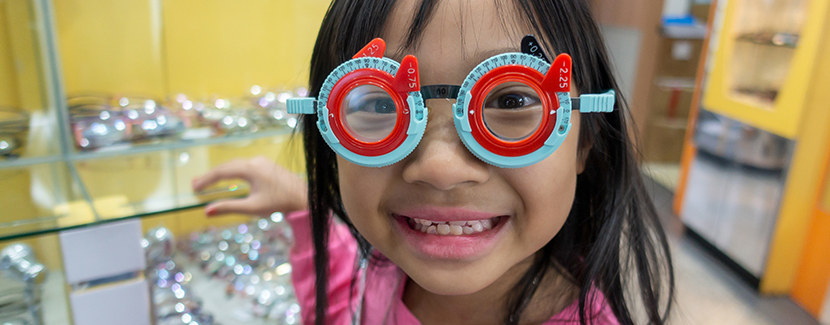
A low vision exam focuses on functional vision and helping people attain a level of visual function and independence for specific tasks. Low-vision doctors work with patients to understand their goals whether those goals are related to classroom needs, vocational needs, independence with daily living, or hobbies and other interests.
Low vision exams
The low vision examination consists of a
complete functional history and a detailed prescription eyewear evaluation.
Once completed, the doctor helps determine what other devices or strategies
will be most helpful for the patient. Devices can include, but are not
limited to:
In addition, low vision clinics educate patients about community resources, mobility training, and transportation access.
Many people seeking low vision services are affected by age-related diseases which include macular degeneration, glaucoma, and complications from diabetes. But low-vision clinics also serve young people with a wide variety of vision needs.
Each eye condition affects vision uniquely and can limit a person’s ability to see faces, read small print, and walk or drive safely. For these reasons, low vision exams are very individualized to a patient’s specific needs and goals.
Low vision exams are especially important as students prepare for transition to college, career and community after high school because low-vision tools empower can youth with low-vison to access work and the community independently.
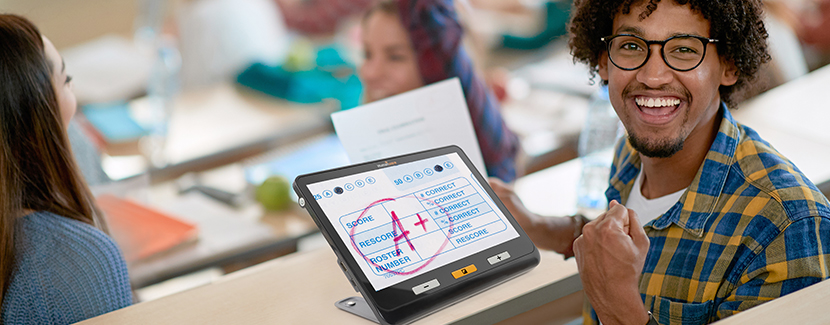
If you or someone you know is diagnosed with vision loss, there are services and products available to help support an independent lifestyle. Electronic magnifiers are one category of products. There are many different types of electronic magnifiers: some are handheld and small enough to fit in your pocket, while others are designed for placement on a desk or table.
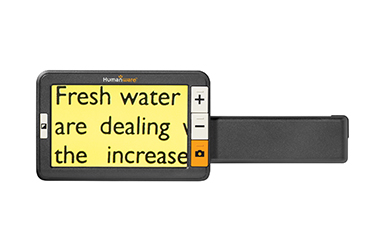
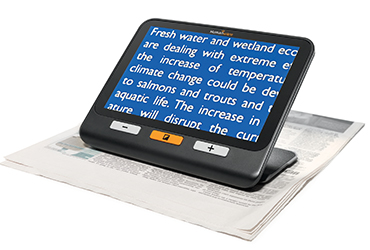
Handheld magnifiers are generally equipped with a 5 to 8-inch screen. They can magnify an object up to 30 times and display text in contrasting colors for easier reading.
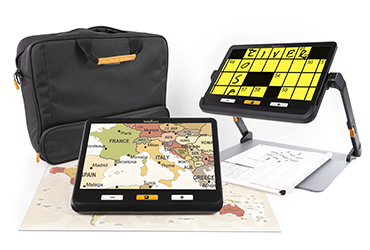
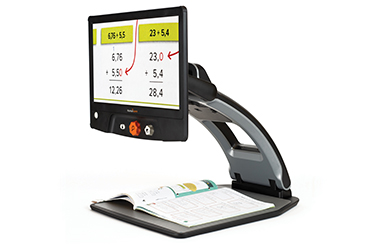
At 12- or 16-inch, portable video magnifiers are a little larger than hand-held devices. They are foldable for carrying and have the capacity to view objects across a room.
With the added size, the 16-inch portable video magnifiers can also include more functions. Some of those functions include optical character recognition (OCR) and text to speech (TTS) technologies that convert printed words into speech.
